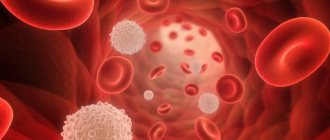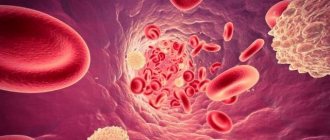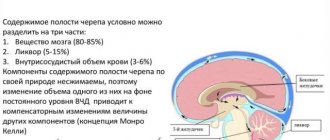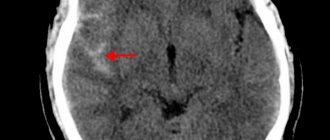Leukopenia is a pathological condition that is characterized by a decrease in leukocytes in the blood (less than 4 x 109/l), including all cells of the leukocyte formula (neutrophils, monocytes, lymphocytes, basophils). Such changes may be reactive, or may be indicators of a malfunction of the bone marrow, which produces white blood cells.
This condition is caused by massive destruction of young blood cells and a decrease in the formation of mature leukocytes, which are the basis for the proper functioning of the immune system.
| Leukocytes are protective blood cells that are an integral part of the immune system. They “destroy” foreign elements, produce biologically active substances, and take part in inflammatory processes. · Therefore, an imbalance of leukocytes leads to a decrease in the body’s defenses, thereby increasing its vulnerability to various types of infections. The severity of the pathological process depends on the rate of reduction of leukocytes in the blood. |
In some clinically healthy people, leukopenia is considered normal.
However, in most cases, a decrease in leukocytes is a pathological condition that develops against the background of primary or secondary causes.
By origin they are:
- Endogenous (hormonal imbalance, inflammatory process in the body, genetic predisposition).
- Exogenous (bacteria, viruses, fungi, parasites).
Infectious and non-infectious.
Causes of the disease
The causes of leukopenia may be due to:
Diseases of blood cells (bone marrow)
- Myelofibrosis;
- Aplastic anemia;
- Enlarged spleen;
- Myelodysplastic syndrome.
Congenital pathologies
- Kostman's syndrome;
- Myelocathexis;
- Kidney failure;
- Itsenko-Cushing syndrome;
- Gensler's syndrome.
Infectious diseases
- ARVI;
- Hepatitis;
- Rubella;
- Tuberculosis;
- HIV.
Purulent pathologies
- Endometritis;
- Cholangitis;
- Sepsis;
- Lung abscess.
Autoimmune disorders
- Allergy;
- Lupus erythematosus;
- Rheumatoid arthritis;
- Thyroiditis;
- Sarcoidosis.
Deficiency of the vitamin-mineral complex
- B vitamins (especially B2, B6, B9 and B12);
- Copper;
- Zinc.
Taking medications
- Cyclosporine;
- Interferon;
- Minocycline;
- Penicillin.
Oncological pathologies and methods of their treatment
- Blood cancer;
- Chemotherapy;
- Radiation therapy;
- Bone marrow transplantation.
Redistribution of leukocytes
- Shock conditions;
- Hard physical labor.
During the process of redistribution, leukocytes temporarily “leave” the bloodstream, switching to the kidneys, lungs, and capillaries.
Prolonged contact with chemicals, radiation, viral infections, hereditary factors can also negatively affect the level of leukocytes in the blood.
Leukopenia in children usually manifests itself against the background of viral infections (acute respiratory infections, influenza, measles, chicken pox), taking certain medications (interferon, antibiotics, antihistamines) or a poor diet (lack of protein, folic acid, zinc).
At the same time, a critical decrease in leukocytes (below 1.5x 109/l) is a reason for an urgent and comprehensive examination.
According to the severity of leukopenia, they are distinguished:
- Mild degree - 1.5x 109/l;
- Leukopenia 2 degrees - 0.5-1 x 109/l;
- Severe leukopenia (agranulocytosis) – less than 0.5x 109/l.
Acute agranulocytosis in children usually indicates a dangerous change in the functioning of the bone marrow.
The World Health Organization adopted the 10th revision of the International Classification of Diseases (ICD) as a single regulatory document, according to which leukopenia was assigned code D72.8.0.
Leukopenia and agranulocytosis
The proportion of leukopenic conditions among other diseases of the blood system is quite large. Statistical data indicate an increase in the number of patients with severe leukopenia in recent years. Often the development of this pathology is in some connection with the use of new bacteriostatic agents in medical practice, with exposure to ionizing radiation, as well as with an increase in episodes of allergic diseases. In assessing leukopenic conditions, the doctor should avoid two opposing trends: in some cases, there is no due attention to leukopenia, which is the beginning of a severe pathology of the blood system, and the necessary preventive and therapeutic measures are not taken; in others, any decrease in the number of leukocytes is regarded as a symptom of a severe pathology with unfounded the use of potent leukopoietic drugs (drugs that enhance the intensity of the formation of these blood cells). Therefore, to correctly assess the significance of “individual” leukopenia, it is necessary, if possible, to find out its causes and mechanism of development, since only such a solution to the issue ensures the success of treatment and preventive measures in each individual case. Leukopenias are often combined with a significant decrease in the number of neutrophils in the peripheral blood, therefore, in essence they are neutropenia or granulocytopenia (respectively, a decrease in the number of neutrophils and granulocytes).
The causes of granulocytopenia, with all their diversity, are divided into exogenous (acting from the outside), endogenous (arising in the body itself) and hereditary. The first group of factors includes some substances that have a toxic effect, such as benzene, toluene, arsenic, mercury; some medications; radiation; infectious diseases.
Endogenous causes of neutropenia may be a violation of the endocrine regulation of granulocytopoiesis, i.e., the formation of granulocytes (thyrotoxicosis, adrenal insufficiency, dysfunction of the pituitary gland), increased spleen function, allergic conditions.
The listed leukopenias are classified as functional. But leukopenia and neutropenia can be a manifestation of a violation of bone marrow hematopoiesis in systemic blood pathologies: acute leukemia, hypo- and aplastic conditions. In some cases, it is not possible to identify the causative factor leading to the development of granulocytopenia. Recently, there are fewer and fewer such forms.
In recent years, a special group of hereditary neutropenias (constant and periodic neutropenias) has been identified. In addition, leukopenia can be symptomatic in the form of an unstable hematological sign in some diseases.
Moderate asymptomatic leukopenia without any clinical manifestations are discovered by chance and are one of the secondary and optional symptoms of various diseases. They are characterized by a moderate decrease in the number of leukocytes (up to 3.0-4.0 H 109/l) and mild granulocytopenia (40-60% of the total number of neutrophils). The functional properties of leukocytes are not changed. Myelopoiesis is not impaired. Bone marrow is normal. There are also no changes in the formation of red blood cells and platelets. Such leuko- and neutropenia are most often purely symptomatic, accompanying a number of diseases not related to the blood system (thyrotoxicosis, gastritis, enterocolitis, cholecystitis, and many others).
Symptoms
Leukopenia, as a rule, is determined accidentally during a preventive study, since it does not have specific clinical symptoms.
The first signs of a decrease in leukocytes may appear when bacterial, viral or infectious complications are involved in the pathological process.
What this entails:
- Increased body temperature;
- The appearance of aphthae on the mucous membranes of the mouth;
- Increased gum bleeding;
- Pustular infections;
- Tachycardia;
- Headache;
- Anxiety;
- Pain in the left hypochondrium (associated with an enlarged spleen).
All symptoms of leukopenia must be carefully examined, so in this case, consultation with a doctor is mandatory.
Leukopenia or something more
Mikhail, Moscow
4452 views
November 28, 2020
Hello! Please tell me about my situation. Two years ago, in the summer of 2021, I had a general malaise: some kind of weakness, lethargy, fog, constant headaches in the parietal region. That year I visited all sorts of doctors, duplicating the opinions of specialists from the same field. I even did an MRI of the brain, fearing anything. Well, I mostly visited neurologists, of course. Gradually, somehow the condition returned to normal. But during all the tests, it was discovered that my leukocytes were constantly low (constantly around 3.4-3.5). This was the first time I heard the diagnosis of leukopenia. In the fall (November) I visited a hematologist, who immediately suggested a bone marrow puncture, but I chickened out. On my second visit, to my surprise, my white blood cell level returned to normal and became 4.2. Well, we said goodbye to the hematologist on a positive note. But immediately after the New Year, having decided to take a control blood test, I discovered that the leukocytes were again below normal ~3.5. In general, I went to the doctors again. I cured gastritis with a gastroenterologist, removed Helicobacter, etc. But the leukocytes were the same. They even dropped to 3.2. As a result, I pulled myself together and did a bone marrow puncture, which showed a decrease in mature granulocytes. Myelokaryocytes and megakaryocytes were reduced, and other indicators were also slightly different from the norm. In conclusion, there was no evidence of bone marrow disease. In July, this is where we said goodbye to the hematologist with the thesis that many people have leukopenia and that’s okay. Since then I have not done OAC anymore, because... I didn’t want to be nervous again, and there was no particular reason. I felt very good. I have nothing to associate the return of leukocytes to normal in the fall of 2021 except with Milgama (B12) injections. At this time, my hernia in my spine worsened, and I had to take a course. Maybe I'm wrong and this has nothing to do with it. Today, having created an electronic medical record on Mos.ru, I discovered that the only available document is an extract from the hospital from the hospital where I had the puncture. The procedure itself took half an hour, but as I have already found out, this does not matter and they write that they occupied a bed for a day. The most important thing is that this extract contains the admission diagnosis and the discharge diagnosis. And in both cases the cost is C92.7 myeloid leukemia! I called the center, where the employee assured me that I shouldn’t worry at all, the attending physician knew best (I don’t know those who signed for discharge from the hospital and have never contacted them). That this is a common thing to justify taking a puncture and suspicion, one diagnosis is written, and then the attending physician makes the final one. But what confuses me about all this is that they never told me about leukemia and that the discharge diagnosis is “leukemia.” What if my hematologist didn’t see this conclusion? The fact is that they create different cards for the attending physician and for the hospital. Therefore, I would like to hear the opinion of specialists regarding both the situation itself and my clinical picture! Thanks in advance! 37 years old, no bad habits, height 176, weight 75
The question is closed
blood analysis
leukocytes
leukopenia
leukemia
hematologist
How to treat leukopenia
Before starting treatment for leukopenia, it is necessary to conduct a comprehensive medical diagnosis, determine the type of leukopenia (neutropenia, lymphopenia, eosinopenia, monocytopenia, agranulocytosis) and the cause of its occurrence. Since any therapeutic effect should always be aimed at eliminating the root cause of a particular disorder.
| For the most accurate and reliable result, it is recommended to undergo a repeat blood test after some time. |
Moreover, not every decrease in leukocytes requires therapeutic intervention; it all depends on the volume and severity of the pathological process.
The Spizhenko Clinic conducts:
- Determining the cause of leukopenia and therapeutic correction if necessary.
- Bone marrow transplantation.
In case of severe oncological processes of the blood system, stem cell transplantation is performed.
- Splenectomy.
In the absence of a positive result in the treatment of autoimmune leukopenia.
Classification
As already mentioned, one type of syndrome is physiological. It occurs quite rarely, in approximately no more than 10 percent of people.
These people do not experience any inconvenience, their immunity is not reduced, and there are no health complaints.
But if the syndrome arose due to any disease, it is already a pathological syndrome.
In a small proportion of the population, the syndrome is hereditary rather than acquired.
In rare cases, an insufficient number of white blood cells is the result of their movement into the vessels. In this case, redistribution syndrome is diagnosed. When the number of leukocytes decreases throughout the bloodstream, a true syndrome is diagnosed.
Neutropenia is the most common type of syndrome. There are several stages:
- Light stage: from 1000 to 1500 neutrophils (one of the types of leukocytes) in 1 μl of blood;
- Moderate stage: from 500 to 1000 in 1 µl;
- Severe stage: less than 500 µl in 1 ml.
The syndrome can be acute or chronic. Acute lasts from several hours to several days. The syndrome is chronic and can last up to several years.
Recommendations for patients with leukopenia after chemotherapy
The key secret in the successful fight against any disease is the coordinated work of the patient and the oncologist. Their joint efforts will make it possible to successfully fight the disease. To do this, it is important to know and follow the recommendations of your doctor. The correct diet deserves special attention - it is determined individually for the patient, in order to stimulate the production of leukocytes. Also, the Vitamed clinic will establish recommendations on lifestyle, taking into account possible symptoms of the problem and other procedures that have proven their effectiveness in practice.
Reasons for a decrease in the level of leukocytes in the blood after chemotherapy
It should be borne in mind that leukopenia is a polyetiological syndrome, which can be a primary condition or a complication of other ailments. Among the main possible causes of leukopenia are:
- The problem of congenital genetic defect.
- Myelotoxic leukopenia, which is provoked by taking chemotherapy drugs used to treat oncology, also in the case of a systemic oncological process developing in the human body.
- Tumor lesion of the bone marrow.
- Disturbance of the body's metabolic processes.
- Infectious damage to the body - with rubella virus, cytomegalovirus infection, Epstein-Barr virus, hepatitis, etc.
- For various forms of tuberculosis.
- The effect of drugs for the treatment of diseases of various organs and systems of our body.
- When the patient works with chemicals for a long time.
Treatment of leukopenia during chemotherapy at the Vitamed clinic
In case of severe leukopenia, a comprehensive, attentive approach to treatment is required, combining a set of appropriate actions:
- Treatment of the underlying disease that caused the problem of leukopenia.
- Maintaining sterile and comfortable conditions for the patient.
- Determining the appropriate course of hormonal therapy.
- Developing a diet, making adjustments to the usual diet.
- Measures to prevent infectious complications.
- Stimulation of leukopoiesis.
For the patient, the Vitamed clinic offers a comprehensive approach aimed at accurately diagnosing and solving the problem. The necessary conditions are created for the patient to prevent infectious complications, simultaneously eliminating the root cause of the pathology.
9-20
What is blood?
Blood is a liquid circulating through human vessels, which consists of plasma and formed elements. These include leukocytes, red blood cells and platelets.
Erythrocytes, red blood cells, which contain hemoglobin. The main function is to provide oxygen to all organs and tissues of the body.
Leukocytes are white blood cells produced in the bone marrow. Under a microscope, they are slightly larger than red blood cells and have a spherical shape.
The main function of leukocytes is to protect against various pathogenic microorganisms to prevent the development of the disease. These blood cells are divided into granulocytes and lymphocytes. Granulocytes ensure the suppression of microorganisms that have entered the body, and lymphocytes are responsible for the production of antibodies to infection. Also, leukocytes have their own formula, including such components as:
- Neutrophils (myelocytes, metamyelocytes, band, segmented);
- Eosinophils;
- Basophils;
- Lymphocytes;
- Monocytes.
All these elements are different forms of leukocytes. Therefore, to diagnose the disease, you need to take a detailed blood test with a leukogram.
The pediatrician and parent must remember that depending on the age of the child, leukocytes change their quantitative composition, which is the norm.
White blood cell counts fluctuate depending on age.
| Child's age | 1 day | 1 month | 6 months | 1 year | 1-6 years | 7-12 years | 13-15 years old |
| Leukocytes, *109/l | 8,5-24,5 | 6,5-13,5 | 5,5-12,5 | 6,0-12,0 | 5-12 | 4,5-10 | 4,3-9,5 |
But these indicators can be increased or decreased, which indicates a pathological process in the child’s body.
Leukopenia in children is a decrease in leukocytes in the blood by two units below the norm for age, or below 4.0 * 109 / l for children of any age. This occurs due to the suppression of their formation or due to their rapid destruction.









